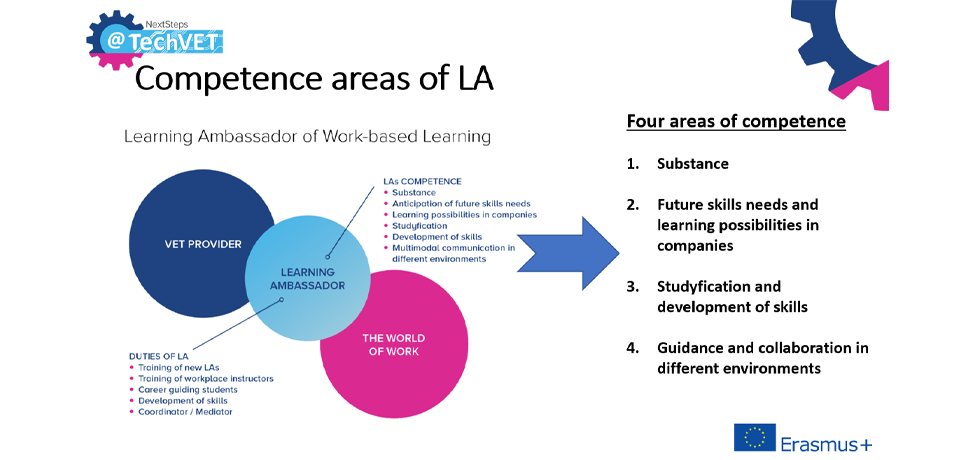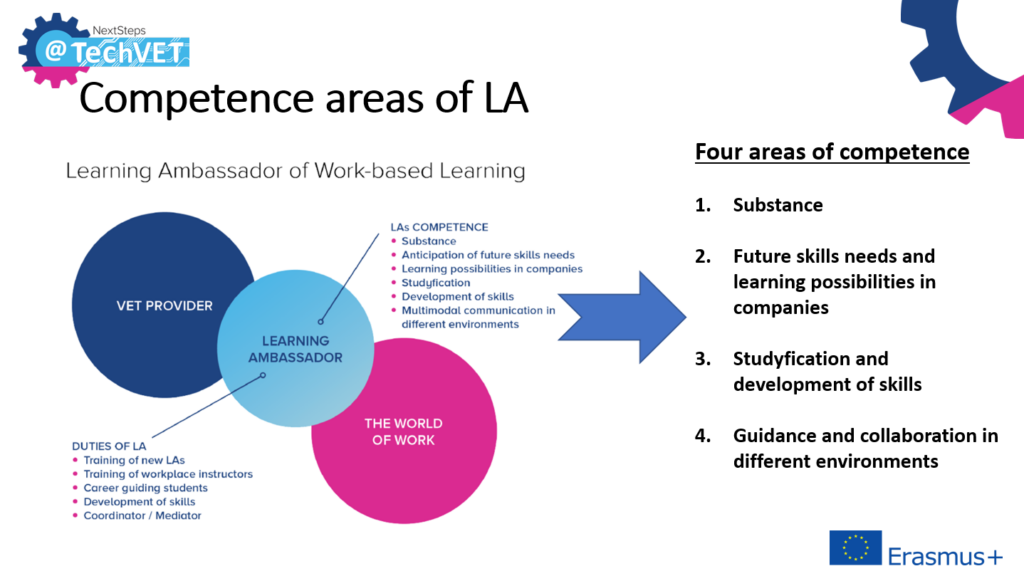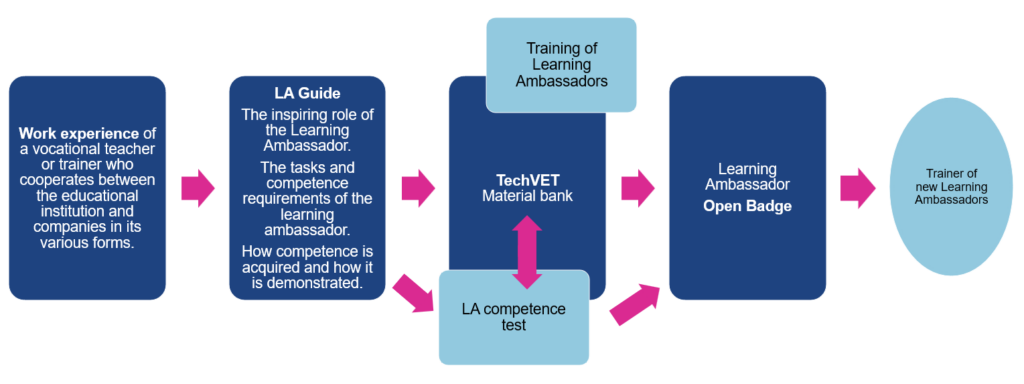
Tuomas Eerola
The role of the professional teacher is changing. More and more teachers and trainers act as ambassadors of learning at the interface between education providers and the world of work. They need to know the skills needs of companies in the region and the learning opportunities at workplaces. They are career guidance experts. They train workplace trainers and new learning ambassadors. What kind of skills does a learning ambassador need? How can learning ambassadors develop their skills and demonstrate their competence?
For vocational training to be able to meet the ever-changing competence needs of the world of work, there is an increasing desire to transfer vocational studies to an authentic environment at the workplace. Alongside this, the use of digital learning solutions is becoming more common and diversified. In addition, there is still a need to study basic skills in a physical educational institution environment. Whether studying takes place in the environment of an educational institution or workplace or virtually, it always needs guidance to support it. The role of a VET teacher changes to a hybrid teacher who has the skills to guide learning and the student’s career path in different environments. In addition, companies and workplace trainers expect teachers to provide pedagogical support in guiding students and assessing skills in the workplace. Support is also expected in developing the workplace as a physically, socially and psychologically safe and effective learning environment. The continuous development of competence is considered an essential competitiveness factor in many companies.
As technological change accelerates, even closer cooperation between vocational education and companies is essential. A professional teacher is expected to act proactively at the interface between the educational institution and companies. Teachers should know the needs of the companies in their area and the learning opportunities in the companies. Teachers participate in anticipating future skills needs together with companies. Now many fields of technology are experiencing a shortage of experts. Companies need both engineers and professionals who have a secondary-level degree. Collaboration is needed to promote the attractiveness of technology sectors and meet the skills challenges of the future as well.
The student also is expected to be self-directed. However, students are individuals with different needs. The teacher must identify the student’s needs and, together with the workplace trainers, be able to offer at the right moment teaching and guidance, if necessary, supported by a multi-professional guidance team. It must be remembered that even though competence goals arise from the needs of the world of work, competence development is always an individual process that requires encouragement, the right kind of guidance, a suitable environment and constructive feedback.
The NextSteps@TechVET project supports the change in vocational education
As a result of international collaboration, the NextSteps@TechVET project has created a model for promoting cooperation between vocational education and workplaces. In the project, a new profession has been developed as part of vocational training. We call the profession “Learning Ambassador”. In the work of learning ambassadors, both the career guidance of students and the cooperation with workplace trainers are central. The job description and competence requirements have been defined for the learning ambassador (Figure 1). The competence of the learning ambassador is divided into four areas: substance, future skills need and learning possibilities in companies, studyfication and development of skills and guidance and collaboration in different environments. According to these areas of competence, a set of digital open badges has also been created. Badges offer learning ambassadors an opportunity to develop and demonstrate their skills. The project has trained the first learning ambassadors for their tasks.

Basically, the learning ambassador has previous experience as a VET teacher or trainer. In the project, a guide has been prepared to help VET teachers and trainers in developing themselves as learning ambassadors. The material bank compiled by the project contains materials for the development of cooperation with the world of work as well as the development of career guidance skills. In addition, the bank has a self-assessment test, sample forms for guidance situations, and extensive material to support the training of workplace trainers. The project has also developed digital open badges, which can be used to identify and recognize the skills of both learning ambassadors and workplace trainers. The path to becoming a Learning Ambassador is shown in Figure 2.

The NextSteps@TechVET project has developed methods and materials for developing the skills of both learning ambassadors and workplace trainers. The development work has taken place in international cooperation in the Northern European context. The goal has been to develop solutions that respond to the common development challenges of vocational education, regardless of different education systems. This must be considered when applying solutions in different systems. The piloting of the new methods of competence development and demonstration and materials also indicated that a follow-up project is needed to root the solutions and further develop them.
Should every professional teacher have the competence of a learning ambassador? This question came up several times in the project. It is clear, that more and more professional teachers need learning ambassador skills in their work, such as career guidance skills. However, for example, not all teachers train workplace trainers. At least for the time being, the learning ambassadors have their own special role as part of vocational education in cooperation with other teachers and trainers, and workplace trainers.
NextSteps@TechVET project has been funded with support from the European Commission, under ERASMUS+. All materials developed by the project can be freely accessed via the project’s website.

Author
Tuomas Eerola works as a principal lecturer in the HAMK Edu research unit. He is the project manager of the NextSteps@TechVET project.





